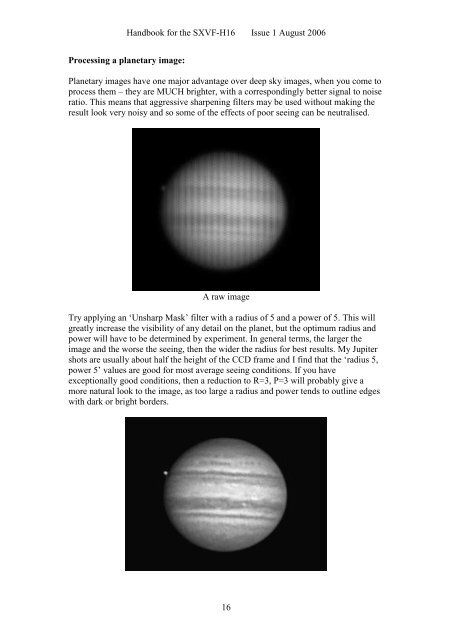SXVF-H16 handbook.pdf - Starlight Xpress
SXVF-H16 handbook.pdf - Starlight Xpress
SXVF-H16 handbook.pdf - Starlight Xpress
You also want an ePaper? Increase the reach of your titles
YUMPU automatically turns print PDFs into web optimized ePapers that Google loves.
Handbook for the <strong>SXVF</strong>-<strong>H16</strong> Issue 1 August 2006<br />
Processing a planetary image:<br />
Planetary images have one major advantage over deep sky images, when you come to<br />
process them – they are MUCH brighter, with a correspondingly better signal to noise<br />
ratio. This means that aggressive sharpening filters may be used without making the<br />
result look very noisy and so some of the effects of poor seeing can be neutralised.<br />
A raw image<br />
Try applying an ‘Unsharp Mask’ filter with a radius of 5 and a power of 5. This will<br />
greatly increase the visibility of any detail on the planet, but the optimum radius and<br />
power will have to be determined by experiment. In general terms, the larger the<br />
image and the worse the seeing, then the wider the radius for best results. My Jupiter<br />
shots are usually about half the height of the CCD frame and I find that the ‘radius 5,<br />
power 5’ values are good for most average seeing conditions. If you have<br />
exceptionally good conditions, then a reduction to R=3, P=3 will probably give a<br />
more natural look to the image, as too large a radius and power tends to outline edges<br />
with dark or bright borders.<br />
16
















